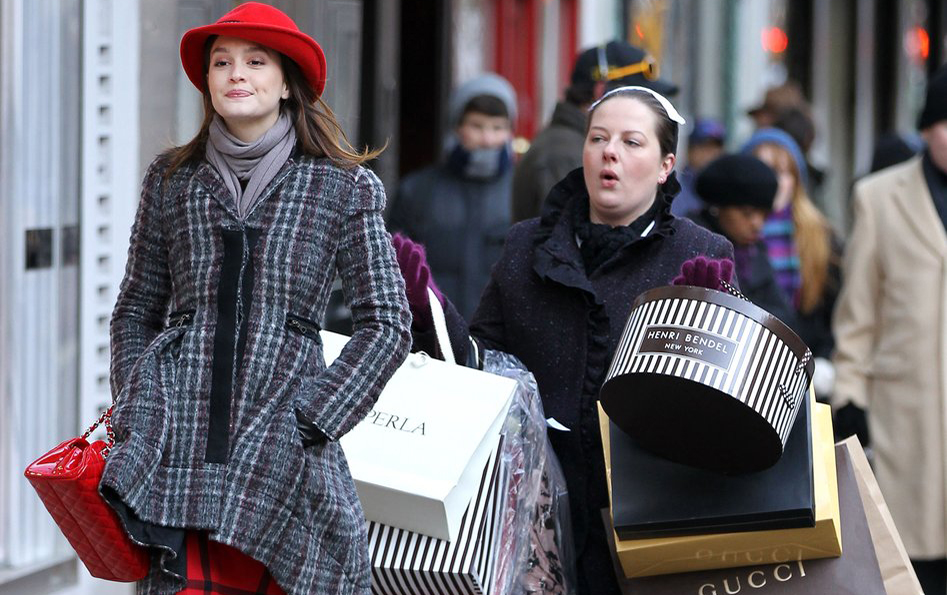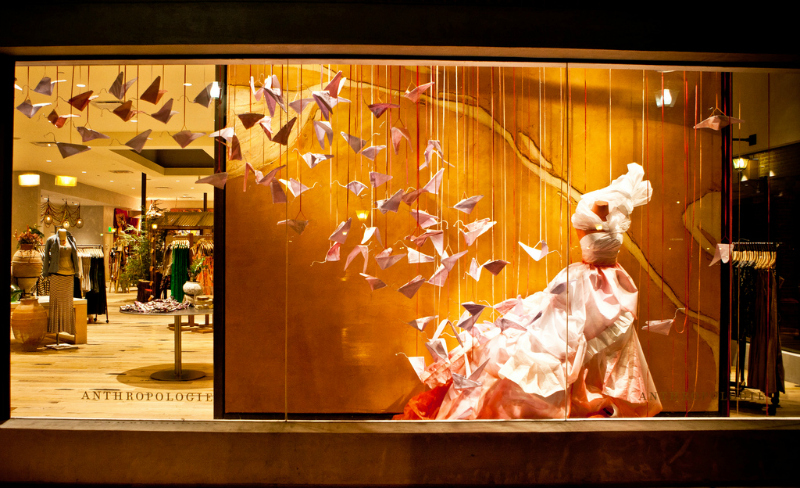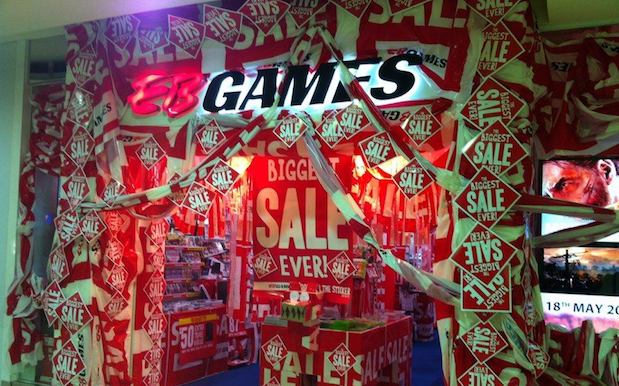
How often do you walk into a store just to browse, only to succumb to buying something? Rather than blame your own weak will, it’s easy to absolve yourself of responsibility and lay fault with the store’s cunning tricks and tips.
There’s undoubtably an art to a store’s presentation, even if ultimately the impulse buy of a $119 crystal lava lamp is on you. Plus, Salvador Dali, Andy Warhol and Frank L. Baum, the man behind the Wizard Of Oz, all cut their creative teeth by creating shopfront displays.

For a peep behind the curtain, we asked visual merchandiser Cara Younger, who works at Country Road, for a couple of insider tricks. Sorry, we mean tips.
“We don’t like to call them tricks so much,” says Cara. “[Though] I’ll say in, like, supermarkets, they definitely use more tricks: they put milk at the back, so you have to go through all the mazes to get there, that sort of thing…. We like to call it the basics of the visual merchandising life; we like to entice customers to make everything easy and simple for them.”
That’s not just double-speak: Cara didn’t get into the game to manipulate y’all into buying linen shirts.
“I loved shopping and have always had an interest in the displays – the windows, how it all come together,” she says.
She was so into all of the elements that went into creating a store’s vibe, she completed a visual merchandising diploma at TAFE NSW, where she made the industry contacts to land her current gig. For Cara, the appeal’s in creating a pleasant, welcoming and pretty environment, kind of halfway between service and interior design.
“We like to make it a simple process for the customer,” she says, “we don’t want to them to work too much.”
Cara says the best way to simplify is to create what she calls a “story”, a cohesive narrative around the store and its current stock of items. Essentially, visual merchandisers want to imbue an aspirational image into your head, a context of when and where you’d use this item, and how you’d look with it.
Clothing stores like Country Road are straightforward examples too, since they often involve mannequins dressed in products and placing that mannequin in a context, either through props, posters or some other form of sensory association.
 This Anthropologie display, for example, really runs with the whimsical elements of the dress.
This Anthropologie display, for example, really runs with the whimsical elements of the dress.
But Cara and other VMs don’t just put some sunglasses and a beach towel together and call it a Summer fun day: there is a lot that goes into creating a story. Here are some of the well-known tricks skills of the trade.
Once you’ve read this, you’ll notice them everywhere.
KEEP ‘EM INTERESTED

But not, you know, in a ‘Nathan For You’ fraud-leaning way.
It’s a fait accompli that the longer you’re in a store, the more likely you’ll buy something.
Some stores do the dirty and force you along a conveyor belt of goods to keep you there: IKEA’s an obvious example, though since its somewhat of a destination store, people don’t mind so much.
But without the space, most stores have to create a sense of comfort that cracks even the hardest of ‘quick shop’ shells. A well-known example is seating for begrudging shopping partners, meaning they’ll shut up and leave their mate to shop.
COLOUR ME IMPRESSED
Generally though, creating a comfortable vibe comes down to colours, tones and occasionally scents – where an EB Games might lean into a bombastic sales display, most stores aim to soothe and attract.
 Who decided this was acceptable?
Who decided this was acceptable?
In terms of colours, sticking to simple monochromes is easiest, as to not overwhelm the eye and to allow the products to pop in the foreground. Research shows that people remember colour much, much more than they do a brand or even a place – by using colour strategically, stores are cementing a brand association.
A simple background or well-placed mirror also might encourage a photo session, which is both: A) free advertising, if they post it online and; B) more time spent in the store, making it feel like your own space. And you thought your store selfies were inspired? Hah!
Playing with surroundings is super important, too: if the shop over is a hot pink lingerie store, a place might need to play it a little safe to distinguish themselves.
FOCUS
An overstimulating store will confuse and cloud most minds, as will an overwhelming display. While a story is important, an astute VM will remember that the product has to remain the focal point. How do they do that?
Well, literally keeping things at the centre of a scene is key – or intentionally playing with rules of thirds or an imbalance. Here’s an example:
(Image credit: Shopify/Pinterest)
Even though any of the products aren’t literally in the centre, our eyes are drawn to them – even the brown bag pops against the background. You get a story – some sort of high-tea countryside vibe – with just playing the items off each other. Less is more, people.
OWN THE SPACE

Rather than just having an eye-shattering window display, most stores try to create spaces all throughout the store to promote movement. More time = more spend, remember?
Similarly, switching up the store regularly creates the illusion of change, essential for any returning customers. Moving things around or just creating a new feature display can make a massive difference and bring people in.
“Every-time they come in, we want them to have a new shopping experience,” says Cara. “We constantly change up the stories to make them feel like they see something new every time they come in.”
ALL OF THE LIGHTS

Ignoring the Abercrombie & Fitches of the world, most shops work with bright, warm lighting. A VM splits lighting into three categories: primary, accent and ambient. Primary refers to the stores overall lighting, accent are highlights, while ambient is more playful.
Mixing and alternating between the three is key: even in the smallest store, it demarcates spaces and creates a sense of levels within the store. In turn, this entices people to explore the whole store, or feel like they can focus on one section without worrying about everything else. Isn’t that kind of them?
We’re all about bettering ourselves and moving forward in our careers and lives in 2K18. Feeling the momentum? With more than 1,200 TAFE NSW courses on offer – from degrees to certificates, from short-term to online courses – it’s never too late to switch things up. Go for it!.
Image credit: Film Magic/Gossip Girl





